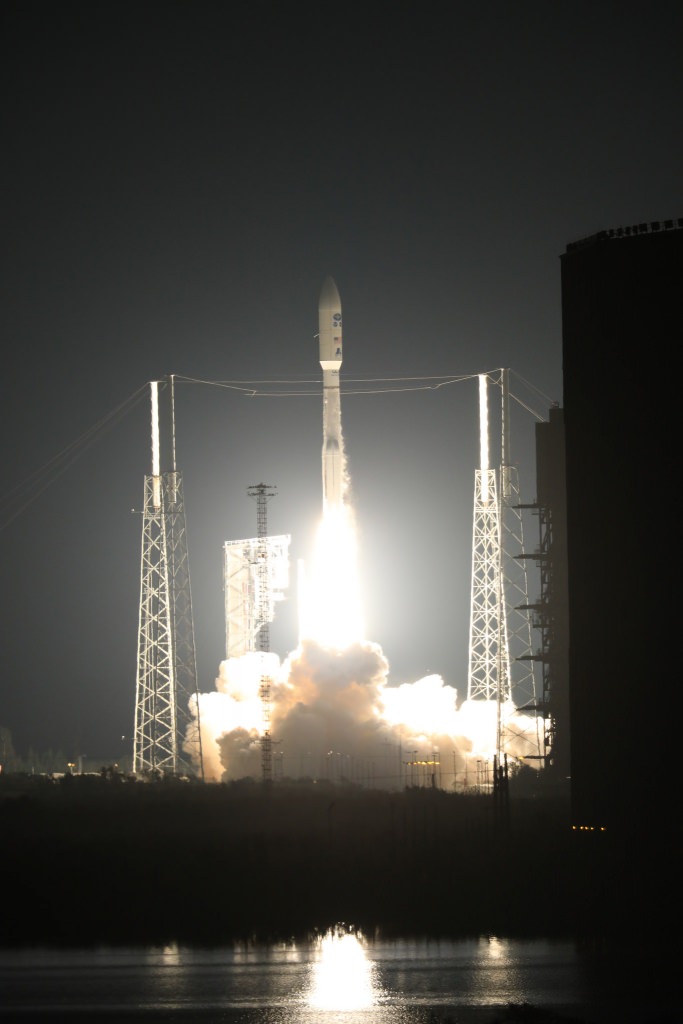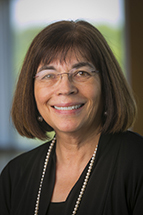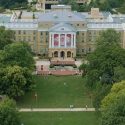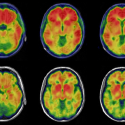UW-Madison dips in research ranking
It’s a very competitive environment for research.
That fact was underscored when the National Science Foundation on Nov. 17 released its 2015 Higher Education Research and Development (HERD) Survey data, showing that UW–Madison, while still near the very top of the list, had slipped from fourth to sixth in its rankings.
The HERD survey is the primary source of information on research and development expenditures at American universities and colleges. Tabulating expenditures is the best available measure of academic research activity.
In fiscal 2015, 640 universities responded to the survey.
UW-Madison had been in the top five in the nation in research spending every year since 1972.

GOES-R, the first in the next generation of geostationary weather satellites from the National Oceanic and Atmospheric Administration (NOAA), successfully lifted off from Cape Canaveral, Florida, on Nov. 19. UW–Madison’s Space Science and Engineering Center (SSEC) played an instrumental role in making the technology possible. Photo: NOAA
Data on UW–Madison’s 2015 expenditures show the university remains a research powerhouse with just under $1.1 billion in annual expenditures for research across all fields, about half of which comes from federal awards. But this total represents a decline in volume from the previous fiscal year (a decline of about $40 million).
“These are challenging times for our researchers as state and other support is cut,” says Marsha Mailick, UW–Madison vice chancellor for research and graduate education. “Our researchers are increasingly required to provide more administrative services and that takes time away from their research and writing research grant proposals. We are concerned by the drop in our ranking and that other states are making investments in their institutions of public higher education, while recent budget cuts have left us unable to make similar investments.”
On Monday, Governor Scott Walker tweeted that he planned to make an additional investment in the UW System in his upcoming budget proposal.
Trends in federal funding show that funding for academic research likely will remain limited, and competition for grants will remain high at that level.
Funding for academic research comes from federal, state and local government; industry; nonprofit organizations; and foundations that act in support of universities. By far, the federal government is the largest source of research support, and in 2015 federal awards totaled nearly $38 billion across all research and development fields nationally. For the year, UW–Madison expended more than $533 million in federal awards, and now ranks 14th, down from 12th, in federal research award expenditures.
The two most significant private contributors of research support to UW–Madison are the Wisconsin Alumni Research Foundation (WARF) and the UW Foundation.
What is UW–Madison doing to up its game and remain competitive?
“UW-Madison continues to invest in our faculty, staff and students, which are our most critical resource for maintaining our position as a top research university,” Mailick says. “It is our faculty and a dedicated staff that compete nationally for the research dollars that spur new knowledge and invention, support our educational mission in unique ways, and provide the basis for Wisconsin’s emerging knowledge economy.”
UW-Madison has launched new programs and made investments in research areas to be more competitive and leverage additional funding. These initiatives include UW2020, supported through WARF and aimed at jump-starting ambitious early stage research and providing new investment for research infrastructure.
The university also has stepped up its investment in retaining our faculty this year.
“When faculty leave our institution, they often take their grant funding with them,” Mailick says. “That’s a serious concern. By retaining faculty, we are also retaining the expertise and financial resources they bring to Wisconsin. While retention packages often include salary increases, most of the funding is used to support the faculty member’s innovative research.
“All of us are dedicated to the idea that UW–Madison will continue to be a top tier research university, with a breadth and depth of research and scholarship that is on a par with, or exceeds, our peer institutions,” Mailick says.
“We are extremely proud of our faculty, staff and students, but if Wisconsin is to remain at the pinnacle of American research universities and regain its lost footing, the state will need to reinvest to be sure we have the faculty positions and conditions necessary to attract and retain the best researchers.”
Marsha Mailick
She cites examples of research that are putting UW–Madison on the national and international research map and advancing the Wisconsin Idea, including providing a better understanding of the Zika virus and finding ways to stop it from spreading; studying children’s emotional development and the relationship between early emotional experience and child psychopathology; and creating innovative energy harvesting and storage technology by using human motion such as walking to power mobile electronic devices.
On Saturday, Nov. 19, UW–Madison’s Space Science and Engineering Center (SSEC) played another instrumental role in strengthening our satellite imagery technology and improving critical weather forecasting, when the next generation geostationary weather satellite, GOES-R, launched. NASA and the National Oceanic and Atmospheric Administration (NOAA) partnered with researchers at SSEC and the UW-based Cooperative Institute for Meteorological Satellite Studies to make the new satellite technology possible.
“We are extremely proud of our faculty, staff and students, but if Wisconsin is to remain at the pinnacle of American research universities and regain its lost footing, the state will need to reinvest to be sure we have the faculty positions and conditions necessary to attract and retain the best researchers,” says Mailick.




